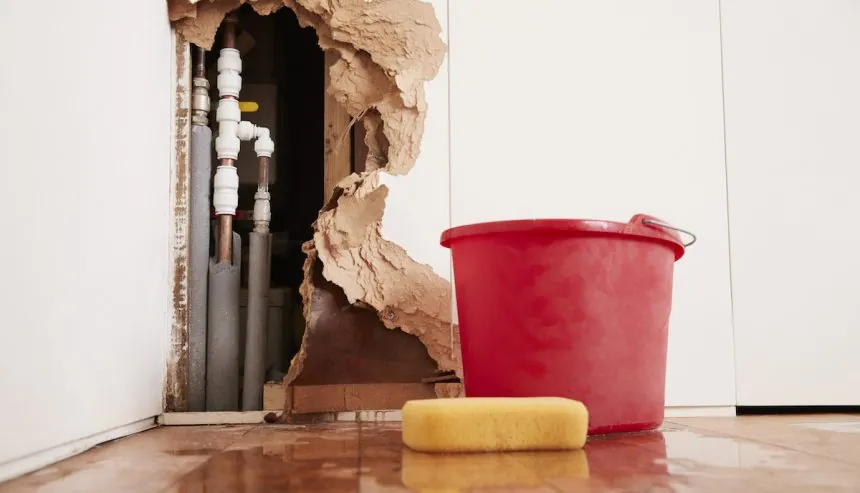Opening Hook
When Sara moved into her dream home in Lahore, she envisioned cozy family movie nights in the basement. But within weeks, that dream soured—literally. Each time she went downstairs, a musty odor clung to her clothes. Her kids refused to play there, and her guests politely avoided it. What was going on?
If you’ve ever walked into a basement and been hit with that damp, stale smell, you know exactly what Sara experienced. The truth is, bad basement air is a common issue worldwide, and especially in climates like Pakistan’s, where humidity and seasonal rains play a big role. But the good news? Once you understand the causes, the solutions aren’t just possible—they’re transformative.
The Hidden Culprit: Excess Moisture
At the heart of most bad basement air problems lies moisture. Basements, being below ground, are naturally vulnerable to water seepage, condensation, and poor airflow.

Furthermore, Pakistan’s monsoon season amplifies this. Heavy rains often saturate the soil, pushing moisture into foundation walls. That dampness doesn’t just sit quietly—it creates the perfect environment for mold and mildew.
For instance, a homeowner in Karachi noticed dark patches on his basement walls after the rainy season. Within weeks, a sour odor followed. The culprit? Moisture trapped inside the walls feeds mold colonies.
Fix: Start by inspecting the foundation for leaks or cracks. Seal them properly with waterproofing materials. Adding a dehumidifier helps control humidity levels, ideally keeping it below 50%. This simple step alone can drastically improve basement air quality.
Read More: Creating a Kid-and-Parent Friendly Basement Together
Mold & Mildew: The Silent Invaders
Once moisture settles in, mold and mildew often follow—and they’re stubborn. These fungi don’t just smell bad; they can also trigger allergies, headaches, and respiratory problems.
In contrast to dust, which can be vacuumed away, mold spreads invisibly through spores. Even if you don’t see fuzzy green patches, the spores might still be floating in the air, giving your basement that distinct “old socks” smell.
For example, Sara’s basement tested positive for mold on the underside of her carpeting. She had thought the smell was just “basement odor,” but in reality, spores were circulating throughout the house.
Fix: Remove any visible mold with specialized cleaners or professional help if the infestation is large. Replace water-damaged materials like carpets or drywall. For prevention, use mold-resistant paints and materials during renovations.
Read More: How Monsoon Affects Basement Excavation in Pakistan
Poor Ventilation: Stale Air Trapped Below
Imagine trying to breathe in a room with no windows and no fan. That’s often what a basement feels like—air trapped, with nowhere to go.
Furthermore, basements in many Pakistani homes are built without proper ventilation systems, relying on minimal vents or none at all. As a result, odors linger and mix together—paint fumes, dampness, dust—all combining into what we call “bad basement air.”
For instance, one Islamabad family transformed their basement simply by installing a small exhaust fan and leaving the door open for cross-ventilation. The difference was immediate: fresh, circulating air replaced the stale, heavy atmosphere.
Fix: Improve airflow. If windows exist, open them periodically. Install exhaust fans or, better yet, connect the basement to the home’s central HVAC system with a return vent. Even portable air purifiers can help by filtering out odor-causing particles.
Read More: Moisture-Resistant Furniture Material Ideas: Choosing Pieces That Last a Lifetime
Radon & Other Invisible Gases
Not all basement air problems are about smell—some are about safety. Radon, a naturally occurring radioactive gas, seeps into basements through cracks in the ground. While not commonly tested in Pakistan, it’s worth noting globally because of its link to lung cancer.
Even if radon isn’t the main issue in your region, other gases—like carbon monoxide from nearby garages or fuel storage—can seep into basements.
Fix: Seal cracks in floors and walls, and if you suspect dangerous gases, consult professionals for air testing. Awareness is key: just because you can’t smell it doesn’t mean it isn’t there.
Read More: Creating a YouTube Studio in a Basement :Turning Hidden Spaces into Creative Havens
Dust, Clutter, and Forgotten Corners
Basements often double as storage spaces—boxes of old clothes, broken furniture, and piles of forgotten items. All that clutter traps dust, which mixes with damp air to create musty odors.
For example, one family in Rawalpindi discovered that the smell in their basement wasn’t just moisture—it was old cardboard boxes that had absorbed dampness over the years. When they cleared out the clutter, the air felt dramatically lighter.
Fix: Declutter regularly. Replace cardboard storage with plastic bins, which don’t absorb moisture. Vacuum and dust the area monthly, even if you don’t use it daily.
Read More: Creating Balanced Lighting with Wall Washers: A Guide to Illuminating Your Space
Furniture & Fabrics That Trap Smells
Have you ever noticed how fabric holds onto odors? In basements, upholstered furniture, carpets, and curtains act like sponges. They absorb dampness and retain musty smells long after the air has been cleaned.

For instance, a friend in Lahore renovated her basement into a home office but couldn’t shake off the bad air. It turned out her old carpet was the culprit. Once she replaced it with vinyl flooring and added washable rugs, the improvement was night and day.
Fix: Avoid wall-to-wall carpeting in basements. Instead, choose easy-to-clean flooring like tiles, vinyl, or sealed concrete. If you must have rugs, use washable ones and clean them often.
Read More: Feng Shui Tips for Basement Layouts :Creating Balance Below Ground
Solutions That Go the Extra Mile
Fixing bad basement air isn’t just about eliminating problems—it’s also about enhancing the atmosphere.
- Air Fresheners vs. Real Solutions: While sprays and candles may mask the smell, they don’t solve the root issue. Always tackle causes first.
- Dehumidifiers: A must-have in humid climates, they quietly pull excess moisture out of the air.
- Houseplants: Some indoor plants, like peace lilies or snake plants, can improve air quality. Just make sure they don’t add to dampness.
- Regular Maintenance: Like any other part of your home, basements need love. Routine inspections and cleaning prevent long-term issues.
As a result, your basement doesn’t just become tolerable—it becomes inviting.
Read More: Basement Office Ideas – 11 Stylish Work From Home Spaces
When to Call in the Experts
Sometimes, despite your best DIY efforts, the smell persists. That’s when professionals come in.
For example, companies in Pakistan specializing in waterproofing and basement renovation can identify hidden leaks, install proper drainage systems, and recommend ventilation upgrades. While this may seem like a big investment, it can protect not just your basement, but the health of your family and the value of your property.
Read More: Checklist Before Breaking Ground for a Basement
Closing: A Breath of Fresh Air
In the end, bad basement air is more than just an inconvenience—it’s a sign of deeper issues that, left unchecked, can affect your home and your health. Whether it’s moisture seeping through walls, mold silently spreading, or simply a lack of airflow, every cause has a solution.
Think back to Sara, who once dreaded her basement. After sealing cracks, adding ventilation, and replacing her old carpet, she now hosts family game nights downstairs. The same space that once repelled her family is now their favorite gathering spot.
Final Thought: A fresh basement isn’t just about cleaner air—it’s about reclaiming a valuable part of your home. With the right steps, you can transform a musty, forgotten basement into a healthy, welcoming space where memories are made, not avoided.
🏗️ Basement Project Calculator
Latest Post
-
Basement Ceiling Ideas Hide Ductwork Smartly
Opening Hook Imagine walking into your basement in Boise, Idaho—where the ceiling is so low that you brush your head on the joists—and noticing a sleek, well-designed backdrop above you instead of exposed ductwork and pipes. That difference, thanks to smart basement ceiling ideas, transforms a cramped, unfinished area into a welcoming space for movie…
-
أفكار رائعة لأرضيات رخيصة في دبي | أفضل ٢٠ خيارًا
تخيل زوجين شابين في شقة مريحة في مرسى دبي، يخطوان حافيي القدمين على أرضية أنيقة بلمسة خشبية. غرفة المعيشة تتلألأ بضوء مسائي خافت، والأرضية تحتها لا تزال تبدو جديدة تمامًا رغم سنوات من الاستخدام – وكل هذا بميزانية محدودة. هذه هي قوة اختيار أرضيات جميلة ورخيصة في دبي: الأناقة والتوفير في آن واحد. التركيز على…
-
Beautiful Cheap Flooring Ideas in Dubai | Top 20 Picks
Imagine a young couple in a cosy apartment in Dubai Marina, stepping barefoot onto a sleek, wood-look floor. The living room glows with soft evening light, the flooring beneath still looks brand-new despite years of use—and all this on a budget. That’s the power of choosing beautiful, cheap flooring in Dubai: style and savings in…



